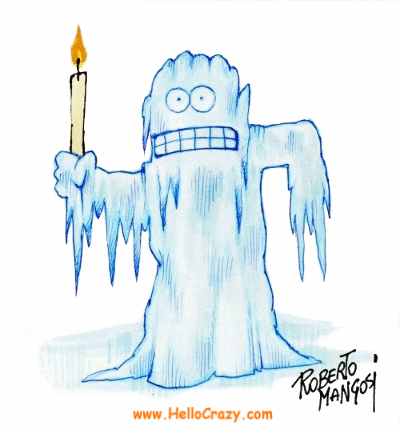
(Image from the website www.hellocracy.com)
The celebration of February 2nd has pagan roots as Imbolc, a midwinter festival from which we get our Groundhog Day. February 2nd is important in agricultural societies because it lies half way between the winter solstice and the spring equinox, and so it marks the day when winter is half over. In pagan times, as winter stores of food were getting low, Imbolc rituals were performed to harness divine energy that would ensure a steady supply of food until the harvest six months later. The superstition arose that if the weather was fair on Imbolc, the second half of the winter would be cold and stormy. If the weather was cold and overcast or stormy, the second half of the winter would be mild. Like many Celtic festivals, the Imbolc celebrations centered around the lighting of fires. Fire was perhaps more important for this festival than others as it was also the holy day of Brigid, the Goddess of fire, healing and fertility. The lighting of fires celebrated the increasing power of the Sun over the coming months.
For the Christian calendar, this holiday was reformed and renamed Candlemas (also seen as Candelmas ) when candles were lit to remember the purification of the Virgin Mary. Candlemas was also the day of the year when all the candles that were used in the Roman Catholic church during the coming year were brought into the church and a blessing was said over them. So, it was the Festival Day or 'mass' of the Candles.
As Candlemas traditions evolved, many people embraced the legend that if the sun shone on the second day of February, an animal would see its shadow and there would be at least six more weeks of winter. Bears or badgers were watched in some European countries, but the German immigrants who settled in Pennsylvania found an abundance of groundhogs and late in the 19th century a few residents in Punxsutawney began celebrating the groundhog as weather prophet. (The Romans learned the traditional beliefs from the Scottish Celts and took them to the area that would become Germany.)
Numerous popular rhymes in England and Scotland embodied this superstition. Here are four:
If Candlemas Day be dry and fair,
The half o' winter's to come and mair;
If Candlemas Day be wet and foul,
The half o' winter's gane at Yule.
If Candlemas Day be fair and bright,
Winter will have another flight
But if it be dark with clouds and rain,
Winter is gone, and will not come again.
The hind had as lief see,
His wife on the bier
As that Candlemas Day
Should be pleasant and clear.
If Candlemas be bright and clear
There'll be two winters in the year.
Candlemas was also the day when Scottish children made small presents of money to their teachers. The master sat at his desk or table, exchanging for the moment his usual authoritative look for one of bland civility, and each child went in turn and placed his offering before him, the sum being generally proportioned to the abilities of the parents. Sixpence and a shilling were the common sums in most schools. According to one web site, the teacher was supposed to spend it on sweets and cakes for the children to eat. Another web site said that originally, the money was to be used to buy candles for the schoolroom but this later changed into a gift to the schoolmaster himself. The Candlemas offering became an important part of the teacher's salary as they were, on the whole, abominably paid.
The boy and girl who gave the most were respectively styled king and queen. This was a desirable award because the king and queen ruled for six weeks and could grant an afternoon off as well as being excused from punishments for the duration. After the king and queen were announced, they were carried out on their king's or queen's chair - the crossed hands of two of their attendants. The children were then dismissed for a holiday. The latter part of the day was usually devoted to what was called the Candlemas breeze, namely, the burning of any piece of furze (greenery) which might exist in their neighborhood. (One web site attributed the burning of greenery as a Christmas tradition that required all Christmas decorations to be taken down by the Twelfth Night (January 5) and all the greenery (e.g., holly, ivy) left over from Yule to be burned on Candlemas Day.)
Sources
Various websites, including:
Facts about February (http://www.woodlands-junior.kent.sch.uk/customs/year/february.htm)
Groundhog Day (http://www.thisischurch.com/christianinfo/candlemass.html)
Perthshire Diary (www.perthshirediary.com)